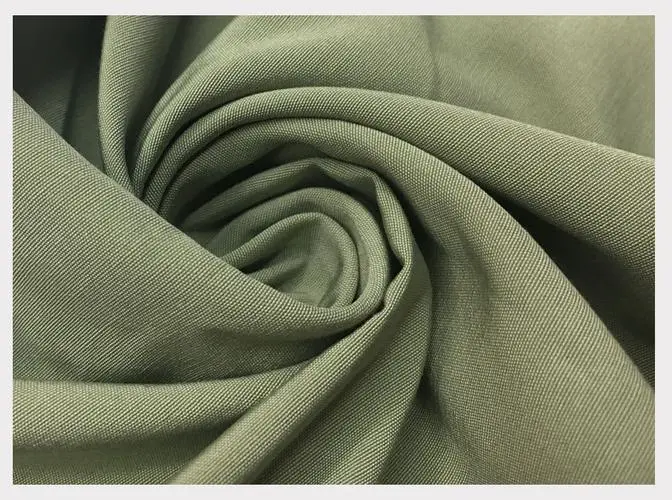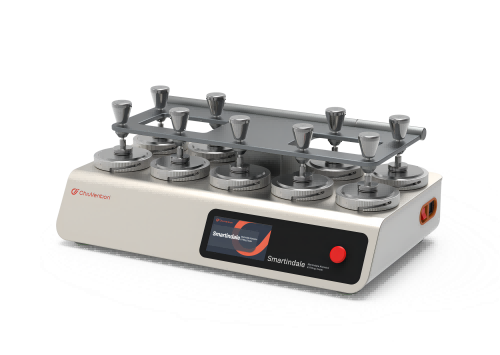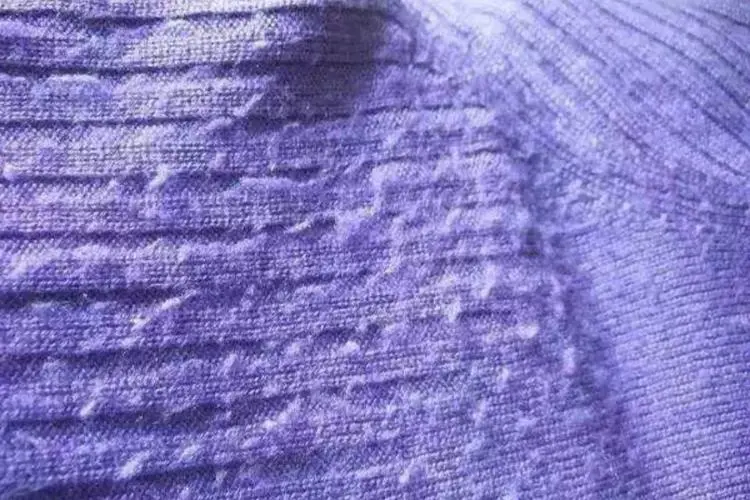Pilling affects many types of fabrics. It may lead to tiny and ugly balls of fiber on your clothes surface. And it can change how your garments look and feel. It can make them look old and weary when still new. It’s important to recognize pilling on your clothes. It helps you take vital steps that may extend their lifespan. In this discussion we look at what causes pilling. We also look at the properties of pilling and how to identify them. Here is how to recognize pilling on fabrics.
Pilling Behaviour Of Different Fabric Materials
Understanding the pilling behavior of different fabrics is important. Both consumers and manufacturers need to understand pilling. It helps in maintaining the beauty of clothes and their durability. Pilling is the development of tiny and tangled balls of fibers on a fabric’s surface. It alters the appearance and the texture.
Polyester and Cotton Blends
Polyester and cotton blends are very susceptible to pilling. This is because both have strong synthetic fibers as well as softer natural fibers. This mix is popular for its balance of comfort. It’s also durable and a good value for money. Yet, it may have certain drawbacks when it comes to pilling.
- The synthetic polyester fibers are much stronger. They are more resilient compared to natural cotton fibers. After subjecting the fabric to friction the weaker cotton fibers break. They also tangle with the stronger polyester fibers. This leads to the formation of pills.
- The smooth surface of polyester fibers tends to trap the broken cotton fibers. This makes the pills more pronounced. Thus they are difficult to remove.
- Frequent washing and wearing may increase pilling. Each wash cycle disturbs the fibers and causes them to break, It leads to formation of pills.
100% Cotton
Pure cotton fabrics usually pill less compared to blended fabrics. This is because cotton fibers are smoother. They are also less prone to tangling. But, the quality of the cotton plays a very important role. Lower-quality cottons often have shorter fibers, which are more prone to breakage. These broken fibers can form pills on the fabric’s surface.
Repeated washing and wearing can exacerbate pilling. Over time, friction from use and laundering causes the fibers to break. This is especially true for lower-quality cotton fabrics. As a result, even pure cotton garments can develop pills if they are not of high quality. So, investing in high-quality cotton garments can help cut pilling.
Polyester and Viscose Blends
Polyester/viscose blends are also prone to pilling issues. The polyester component provides strength and durability. But, viscose, a regenerated cellulose fiber, tends to fuzz. This fuzzing makes the fabric more susceptible to pilling. The combination of these two fibers creates a unique challenge.
Viscose breaks down more easily than polyester. This breakdown leads to the formation of pills. The strong polyester fibers hold onto these pills. So, pills become more pronounced and difficult to remove. Thus, despite the blend’s strength, it can still look worn.
Linen and Silk Fabrics
Linen and silk fabrics have better pilling resistance. These natural fibers are smoother and less prone to tangling. Linen fibers are long and sturdy, reducing pilling risk. Silk fibers are also strong and naturally smooth. This smoothness prevents fibers from breaking and forming pills.
These fabrics maintain their appearance longer than synthetic blends. They are less likely to show wear and tear more easily. Proper care further enhances their durability. Gentle washing and avoiding harsh detergents are key. Despite their delicate nature, they offer excellent longevity. Investing in linen and silk can thus result in fewer pilling issues.
Upholstery Fabrics
Flat woven upholstery fabrics are more likely to pill. This is due to their dense and even texture. The fibers in these fabrics lift easily. When subjected to abrasion, they form pills quickly. Compared to full-surface chenille or velvet, flat woven fabrics perform poorly.
Chenille and velvet have a plush surface. This makes them less prone to pilling. Their textures prevent fibers from lifting and tangling. So, they maintain a smoother appearance. Proper care can reduce pilling in flat woven fabrics. Regular maintenance ensures the longevity of these materials.
Relationship Between Texture And Pilling Of Fabrics
The texture of a fabric impacts its pilling tendency. Smooth fabrics are less likely to pill. Their fibers don’t lift or tangle. This smoothness helps maintain the fabric’s appearance over time. In contrast, rougher textures experience more pilling issues.
Flat woven fabrics often have a dense and even texture. This uniformity makes them more prone to pilling. The fibers lift when subjected to friction. As a result, pills form on the fabric’s surface. Regular abrasion worsens this problem.
Chenille and velvet fabrics have a different texture. Their plush surfaces reduce pilling tendencies. These textures prevent fibers from lifting and tangling. Chenille and velvet thus maintain a smoother look longer. Their resistance to pilling is a notable advantage.
Proper care can mitigate pilling in various fabrics. Gentle washing and lower friction reduce pilling risk. Using fabric softeners can also help. Regular maintenance ensures the longevity of all fabric types. This care preserves their appearance and texture.
Relationship Between Fabric Abrasion Resistance and Pilling
The relationship between fabric abrasion resistance and piling is crucial. Fabrics with higher abrasion resistance tend to pill less. Their strong fibers withstand friction and wear better. This durability prevents fibers from breaking and forming pills. High abrasion-resistant fabrics maintain a smooth appearance longer.
Low abrasion-resistant fabrics are more prone to pilling. Their fibers break easily under friction. This breakage leads to small fiber balls, or pills, on the surface. Frequent use and washing worsen the problem. As a result, low abrasion resistance often means a shorter fabric lifespan.
Different factors influence a fabric’s abrasion resistance. Fiber type, weave, and finishing processes all play roles. Natural fibers have lower abrasion resistance. Synthetic fibers, especially those designed for durability, perform better. Weave density also impacts resistance. Tightly woven fabrics usually resist abrasion more effectively.
Proper care can improve a fabric’s abrasion resistance. Gentle handling reduces friction and wear. Washing in cold water and using mild detergents help. Avoiding harsh treatments like high-heat drying protects the fibers. Taking these steps prolongs the life and appearance of your fabrics.
Impact of Fabric Pilling on Garment Quality
Fabric pilling significantly impacts garment quality and appearance. Pills create small, unsightly fiber balls on the surface. These pills detract from the garment’s overall look. They make clothes appear worn and old. This negatively affects the perceived quality.
Pilling reduces the smoothness and texture of fabrics. The fabric feels rougher to the touch. This change can be uncomfortable for the wearer. It also diminishes the garment’s aesthetic appeal. Smooth textures are often associated with higher quality.
Garment durability is compromised by pilling. Fibers break and weaken when pills form. This breakage leads to quicker wear and tear. As a result, garments with extensive pilling have a shorter lifespan. This reduces their value and usefulness.
Professional settings suffer when clothing pills. Uniforms and work attire need to look pristine. Pilled fabrics convey a lack of care and professionalism. Employees may feel less confident in worn-looking clothes. This affects workplace image and morale.
Consumer satisfaction is impacted by pilling. Shoppers expect high-quality, long-lasting garments. When clothes pill quickly, customers feel disappointed. This can lead to negative reviews and returns. Brands may lose repeat business due to pilling issues.
Proper care can mitigate pilling and maintain garment quality. Washing clothes inside out reduces friction. Using gentle cycles and mild detergents helps. Avoiding high-heat drying protects fibers. Following these steps preserves the garment’s appearance and lifespan.
How to Identify Fabrics Prone to Pilling
Identifying fabrics prone to pilling starts with understanding material types. Natural fibers like wool and cotton pill easily. They have shorter, less durable fibers. Synthetic blends often resist pilling better. But, some synthetics like polyester can also pill.
The weave of fabric impacts pilling likelihood. Tighter weaves pill less than loose ones. Loosely woven fabrics have more exposed fibers. These fibers lift and tangle, forming pills. Tighter weaves keep fibers contained, reducing pilling chances.
Examine the fabric texture closely. Smooth textures pill less than rough ones. Rough textures have more surface friction. This friction increases fiber breakage and pilling. Smooth fabrics maintain their appearance longer under stress.
High-quality fabrics usually resist pilling better. Look for premium materials and craftsmanship. Higher thread counts indicate tighter weaves. These fabrics are generally more durable. Quality control in production reduces pilling risks.
Pill Test
Conduct a simple pill test if possible. Rub the fabric between your hands. Examine any fiber balls that form. If pills appear quickly, the fabric is prone to pilling. This quick test helps in identifying potential issues.
- To conduct a simple pill test, start by rubbing the fabric between your hands. Take a small section of the fabric and rub it gently but firmly for about 10-15 seconds. Focus on creating consistent friction without damaging the fabric. This initial step helps simulate typical wear and tear.
- Next, examine any fiber balls that form. After rubbing, look closely at the fabric’s surface. Check for small fiber balls, or pills, that may have formed. Use good lighting to detect even minor pilling, ensuring you don’t miss any subtle signs.
- Assess the speed of pilling formation during the test. Note how quickly pills appear. Fabrics that pill within a few seconds are highly prone to pilling. Slower formation indicates better resistance to pilling. This observation is crucial for understanding the fabric’s durability.
- Test the severity of pilling by considering both the number and size of pills. Many or large pills suggest a greater tendency to pill. Minimal or no pills show a more durable fabric. This step helps gauge the quality of the material.
- Determine potential issues based on the pill test results. Fabrics showing immediate pilling will likely deteriorate quickly. Consider alternative materials if pilling is a concern. This can save you from future disappointment.
- Finally, use the pill test findings to make informed decisions. Opt for fabrics demonstrating minimal pilling in the test. This simple step helps ensure long-lasting, high-quality garments. It allows you to invest in materials that will maintain their appearance. It also enables you to choose durable clothes over time.
Consider the fabric’s purpose and use. High-abrasion areas need durable fabrics. For example, upholstery requires high abrasion resistance. Everyday clothing also benefits from pill-resistant materials. Choose fabrics based on intended wear and tear.
Consult care labels for fabric maintenance instructions. Proper care reduces pilling risks. Follow guidelines for washing and drying. Gentle handling preserves fabric quality. Careful maintenance extends the life of garments and reduces pilling.
How to Select Suitable Textile Samples for Testing
Selecting suitable textile samples for testing begins with understanding your needs. Identify the specific properties you want to test. This could include strength, durability, or comfort. Knowing your priorities helps narrow down sample choices.
- Consider the fabric’s intended use when selecting samples. Different applications require different qualities. For example, upholstery needs high durability. Clothing materials should be comfortable and breathable. Match samples to their end use for accurate testing.
- Choose samples from reputable suppliers. Trusted sources provide consistent quality. They follow industry standards in production. This ensures the samples are reliable. Avoid unknown or unverified suppliers to reduce risks.
- Ensure the samples represent a range of options. Include various weaves, blends, and fiber types. This diversity allows comprehensive testing. It helps identify the best material for your needs. A broad selection provides a clearer picture.
- Check the sample size before testing. Ensure it’s large enough for many tests. Small samples may not show true fabric performance. Larger samples offer more reliable results. Accurate testing requires adequate sample dimensions.
- Examine the samples for any visible flaws. Look for defects like inconsistencies or damage. These issues can affect test outcomes. Only use samples in excellent condition. This ensures accurate and fair testing processes.
- Document the source and specifications of each sample. Keep records of supplier information and material details. This helps trace back any issues during testing. Proper documentation supports transparency and consistency. It also aids in future decision making.
How to Recognize Pilling of Fabrics
Recognizing pilling in fabrics starts with a close visual inspection. Examine the surface of the fabric carefully. Look for small, fuzzy balls. These are the pills that form from broken fibers. Good lighting helps make them more visible.
- Run your hand over the fabric’s surface. Feel for any rough or uneven textures. Pills often create a bumpy feel. Smooth fabrics should not have these irregularities. This tactile check can confirm visual findings.
- Focus on high-friction areas of the garment. Pilling most commonly occurs where there is frequent rubbing. Areas like underarms, cuffs, and thighs are prone to pilling. Inspect these spots more thoroughly for accurate assessment.
- Check both new and old garments. Newly purchased items can pill quickly if made with low-quality fibers. Older garments may show more extensive pilling due to wear. Comparing different age garments gives a broader perspective.
- Use a magnifying glass for a detailed examination. This tool helps see smaller pills that might be missed by the naked eye. It provides a closer look at the fabric’s surface. A magnified view offers better pilling recognition.
- Differentiate between lint and pills. Lint can sometimes resemble pills but is usually looser. Pills are attached to the fabric and harder to remove. Identifying the difference ensures proper pilling detection.
- Observe how the fabric reacts to laundering. Some fabrics pill more after washing. Check the garment before and after washing cycles. Notice any increase in pilling. This can indicate the fabric’s long-term durability.
- Consult care labels and fabric composition details. Certain materials are more prone to pilling. Synthetics and blends often pill more than natural fibers. Understanding the fabric’s makeup helps anticipate pilling tendencies. This knowledge aids in recognizing and managing pilling effectively.
What Are the Grades of Fabric Pilling
Fabric pilling is graded on a scale from one to five. This helps assess the severity of pilling and ranges from no pilling to severe pilling. Understanding these grades is essential for evaluating fabric quality. It also helps you in making informed decisions about fabric purchases.
Grade One: Severe Pilling
This indicates the worst level of fabric deterioration. Severe pilling shows many, large pills, heavily covering the fabric’s surface. This grade signifies very poor fabric quality. It results in garments that look old and worn quickly, often after minimal use.
Grade Two: Heavy Pilling
This represents a high degree of fabric wear. Fabrics with heavy pilling have many, moderate-sized pills that affect the surface. This grade also suggests low fabric durability. The clothes appear untidy and worn out shortly after use.
Grade Three: Moderate Pilling
This is indicative of average fabric performance. Moderate pilling shows a noticeable amount of pills that are medium in size and number. It indicates that the fabric is of average quality. The garments may show signs of wear but remain wearable for a reasonable period.
Grade Four: Slight Pilling
This reflects good fabric quality with minimal wear. Slight pilling manifests as a few, small-sized pills. These may affect the fabric’s surface. Garments with this grade maintain a smooth appearance. It indicates good durability and longevity.
Grade Five: No Pilling
This represents the highest fabric quality. Fabrics with no pilling show an absence of pills. The surface remains completely smooth. This grade indicates excellent fabric quality. It ensures that garments maintain a pristine appearance over time.
Conclusion
Recognizing fabric pilling involves visual and tactile checks. Examine the surface for small, fuzzy balls under good lighting. Feel for rough textures, especially in high-friction areas. Compare new and old garments to see pilling trends. Use a magnifying glass for detailed inspection. Differentiate between loose lint and attached pills. Observe changes after laundering. Consult care labels and fabric composition for pilling tendencies. This method ensures accurate identification and management of pilling.
For more information on textile testing methods/standards
or textile testing machines, contact us:
What’s App: +86 180 2511 4082
Tel: +86 769 2329 4842
Fax: +86 769 2329 4860
Email: [email protected]


